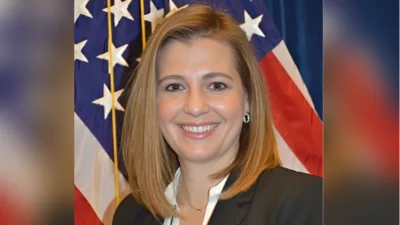Dr. Fred Pestello, President | St. Louis University
Dr. Fred Pestello, President | St. Louis University
Research published in the journal Atmosphere has revealed that the Urban Heat Island (UHI) effect in St. Louis moderated the expected temperature cooling during the 2017 total solar eclipse. The study's findings have influenced changes in how meteorologists will approach research for the upcoming 2024 eclipse.
The study, led by Robert Pasken, Ph.D., associate professor of Meteorology at Saint Louis University, noted that "the vertical temperature profile along the eclipse center line during totality was not what we expected." As a result, researchers are focusing on collecting vertical temperature profiles using radiosonde launches and instrumented UAVs.
In 2017, scientists from Saint Louis University, University of Maryland Baltimore County, and the University of Central Florida evaluated how St. Louis’ urban core heat affected temperature, pressure, and wind during a solar eclipse. The team utilized the QuantumWeather system to gather data from a permanent surface mesonet and an upper air network comprising three InterMet sounding systems located at various sites.
The research included novel aspects such as using a dense surface network to sample eclipse responses along portions of its path and examining differences between rural, suburban, and urban landscapes. A thunderstorm outflow passing through at totality time also added complexity to their observations.
Pasken highlighted that while "the dense surface network created a unique picture" of UHI influence during the eclipse, studying vertical profiles provided additional insights into weather changes attributable to both local urban factors and broader atmospheric phenomena.
Satellite imagery showed St. Louis' UHI strengthening throughout the day. Urban sites were identified within St. Louis City and County limits; suburban stations were in nearby Metro areas; rural stations covered all remaining locations.
Temperature drops occurred swiftly across QuantumWeather stations when the eclipse began but were less pronounced in urban areas due to UHI moderation. Researchers concluded that UHI significantly reduced cooling magnitude in these regions compared to suburban zones.
Looking ahead to April 8, 2024, Pasken's team plans further investigations into meteorological impacts during another total solar eclipse using weather balloons and drones from Trail of Tears State Park.
Additional authors involved in this study include Jeffrey Halverson from University of Maryland Baltimore County's Department of Geography and Environmental Systems; Peter Braunschweig from University of Central Florida's Physics Department.





 Alerts Sign-up
Alerts Sign-up